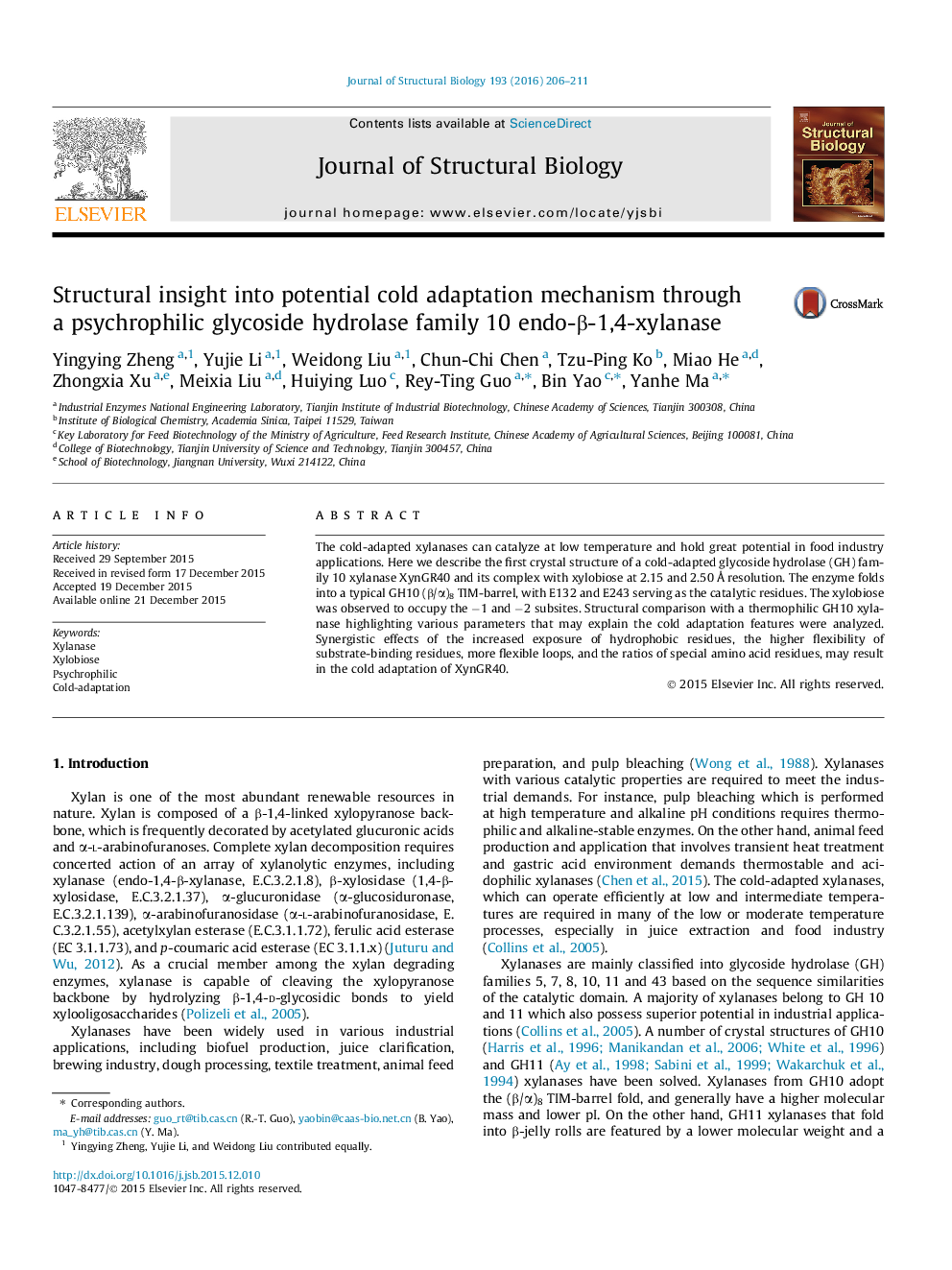| Article ID | Journal | Published Year | Pages | File Type |
|---|---|---|---|---|
| 2828428 | Journal of Structural Biology | 2016 | 6 Pages |
The cold-adapted xylanases can catalyze at low temperature and hold great potential in food industry applications. Here we describe the first crystal structure of a cold-adapted glycoside hydrolase (GH) family 10 xylanase XynGR40 and its complex with xylobiose at 2.15 and 2.50 Å resolution. The enzyme folds into a typical GH10 (β/α)8 TIM-barrel, with E132 and E243 serving as the catalytic residues. The xylobiose was observed to occupy the −1 and −2 subsites. Structural comparison with a thermophilic GH10 xylanase highlighting various parameters that may explain the cold adaptation features were analyzed. Synergistic effects of the increased exposure of hydrophobic residues, the higher flexibility of substrate-binding residues, more flexible loops, and the ratios of special amino acid residues, may result in the cold adaptation of XynGR40.
